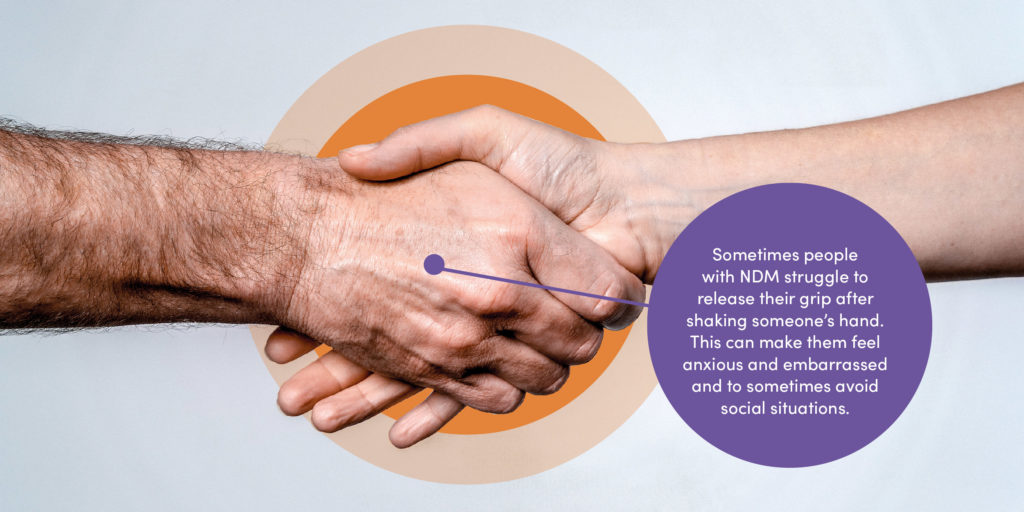How can doctors decide if I have NDM?
Non-dystrophic myotonia, or NDM, refers to a group of rare diseases that affect muscles.1,2 Because NDM is rare, it may not be the first condition a doctor thinks of when you tell them about your symptoms. Often it takes people with NDM several years before they find out what is causing their problems.3

Your healthcare team may need to run several tests to be sure that they get your diagnosis correct. NDM cannot be diagnosed with one single test.2 Also, as NDM includes a number of conditions with similar symptoms, your doctor will want to make sure they know exactly what type of NDM you have so that they can help you manage your symptoms in the best way possible. If you are unsure about any aspect of any test, don’t be afraid to ask a member of your healthcare team for more information.
History of symptoms
A doctor may first suspect NDM after carefully listening to your history of symptoms.3 They will need to know when you first started to notice stiffness in your muscles, which muscles are affected and when symptoms are better or worse. Symptoms of NDM can change from day to day. Tracking your symptoms in a diary may help you unlock any patterns that can help your doctor identify which type of NDM you may have.
Clinical examination
Your doctor may wish to examine your muscles for signs of NDM.2 Although for many people with NDM their muscles may appear normal, in some cases affected muscles may be well defined or conversely, exhibit signs of weakness. Your doctor may ask you to repeatedly clench and unclench your fist, close and open your eyes, stand up and walk around a chair, or climb stairs to check for signs of myotonia.
Electromyography (EMG)
Myotonia can be checked for by using a test called an electromyography (also referred to as an EMG), which measures the electrical signalling in your muscles.2,4,5 During the procedure, a small needle carrying a fine wire will be inserted into your muscle to measure the activity. Some people may find this uncomfortable, but it will not harm you and any uncomfortable sensations will stop once the procedure has finished.
While you are having an electromyograph, your doctor may ask you to carry out a short or long exercise test; these can help them distinguish which kind of NDM you might have.2,4,5 They may also ask you to repeat the test after some rest or cooling the muscle being investigated.
Genetic analysis
NDM is caused by a mutation in the genes responsible for making sodium and chloride ion channel proteins in your muscle cells. Over 265 different mutations have been recorded in people with NDM,6 and it is possible to test for mutations in all the genes that may be involved in NDM at the same time, using one genetic test.2 Identifying what mutation you are carrying will help your doctor decide what type of NDM you have, and how best to manage your symptoms. To have a genetic analysis, you will need to have a blood sample taken.
References
- Stunnenberg BC, et al. Muscle Nerve 2020;62:430-444
- Matthews E, et al. Pract Neurol 2021;0:1-10
- Matthews E. Brain 2010; 133(1):9–22
- Fournier E. Ann Neurol 2004;56:650–61
- Fournier E. Ann Neurol 2006;60:356–65
- Morales F and Pusch M. Front Neurol 2020;10:1404
UK-NDM-2202-00005 February 2022